Find Your Bliss: Top Massage Experiences in London
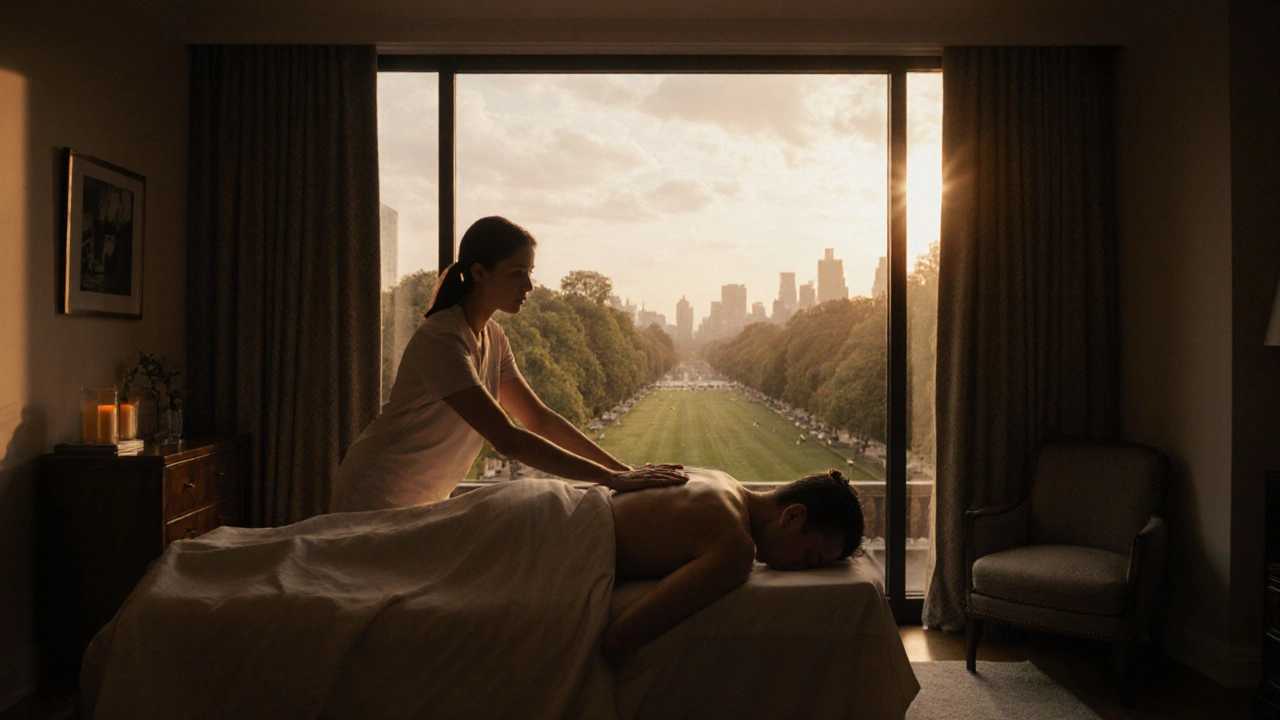
London isn’t just about the Tube, the Thames, or the queues at Buckingham Palace. Somewhere between the buzz of Soho and the quiet of Mayfair, there’s a quiet revolution happening-one that starts with a single touch. If you’ve ever walked into a London spa and wondered if it’s worth the price, or if you’ve left a massage feeling more tense than when you arrived, you’re not alone. The truth? Not all massages are created equal. And in a city this big, finding the one that actually leaves you refreshed, not just relaxed, takes more than a Google search.
What Makes a Massage Experience in London Truly Special?
It’s not about the candles, the lavender oil, or the price tag. It’s about the person behind the hands. A great massage in London doesn’t just move muscles-it reads your body. It notices the tension in your shoulders from staring at a screen all day. It feels the tightness in your hips from walking in heels or standing on a commute. And then, it does something about it.
Most places in London offer the same six types: Swedish, deep tissue, hot stone, Thai, aromatherapy, and sports. But the ones that stand out? They tailor everything. They ask questions before you lie down. They adjust pressure without you having to say a word. They don’t rush you out after 50 minutes. They let you linger in the post-massage silence, sipping herbal tea, feeling like you’ve been reset.
The Best Massage Spas in London (And Why They Work)
Here are five places that consistently deliver more than a service-they deliver transformation.
- The London Spa Club (Mayfair) - This isn’t your average hotel spa. The therapists here train for 18 months before touching a client. Their signature blend-called Harmony Flow-combines Swedish strokes with gentle myofascial release. Clients report lasting relief from chronic neck pain after just two visits. No gimmicks. No upsells. Just skilled hands and a quiet, dimly lit room with floor-to-ceiling windows overlooking Green Park.
- The Sanctuary (Notting Hill) - If you’ve ever felt like your body is screaming for attention, this is your place. They specialize in trauma-informed massage, meaning they work with people who carry stress in their tissues-not just from work, but from grief, anxiety, or past injury. Their signature treatment, Stillness & Release, uses weighted blankets, sound bowls, and slow, intentional touch. Many clients come back monthly, not because they’re addicted to the massage, but because they finally feel safe in their own skin.
- Thai House London (Soho) - This isn’t the kind of Thai massage where you’re pulled like a ragdoll. The therapists here are trained in Chiang Mai, and they focus on energy lines (sen lines), not just muscles. Their 90-minute session includes acupressure, gentle yoga stretches, and deep compression. You leave feeling loose, not sore. And yes, it’s still affordable-under £80.
- Alma Spa (Chelsea) - If you’ve ever tried a hot stone massage and felt like you were lying on a griddle, avoid the tourist traps. Alma uses basalt stones heated to exactly 48°C, never higher. Their therapists place them along your spine and sacrum with surgical precision, then follow with a slow, rhythmic Swedish flow. The result? Deep warmth that lasts for hours. Their Stone & Sage treatment includes a scalp massage with cold-pressed rosemary oil, which one client said “made her cry from relief.”
- The Quiet Room (Shoreditch) - This is the hidden gem. No website. No Instagram. Just a door on a quiet street with a single bell. Inside, you’ll find a former physiotherapist who switched to massage after seeing how many people were being mistreated by the healthcare system. He works with athletes, office workers, and trauma survivors. His signature technique? Weighted Compression-using sandbags and slow, sustained pressure to release deep fascial restrictions. Bookings fill up weeks in advance.
What to Avoid in London Massage Spas
Not every place that calls itself a “luxury spa” deserves the label. Here’s what to watch out for:
- Pressure that’s too hard - Deep tissue shouldn’t hurt. If you’re gritting your teeth, it’s not healing-it’s damaging. A good therapist adjusts based on your feedback, not a script.
- Overpriced add-ons - You shouldn’t need to pay extra for warm towels, aromatherapy, or a foot scrub. These should be standard.
- Therapists who talk nonstop - A massage isn’t a coffee chat. If the therapist is narrating their day or asking personal questions, they’re not focused on you.
- Spas that don’t ask about injuries - If they don’t ask if you have sciatica, a recent surgery, or high blood pressure, walk out. Safety comes before relaxation.
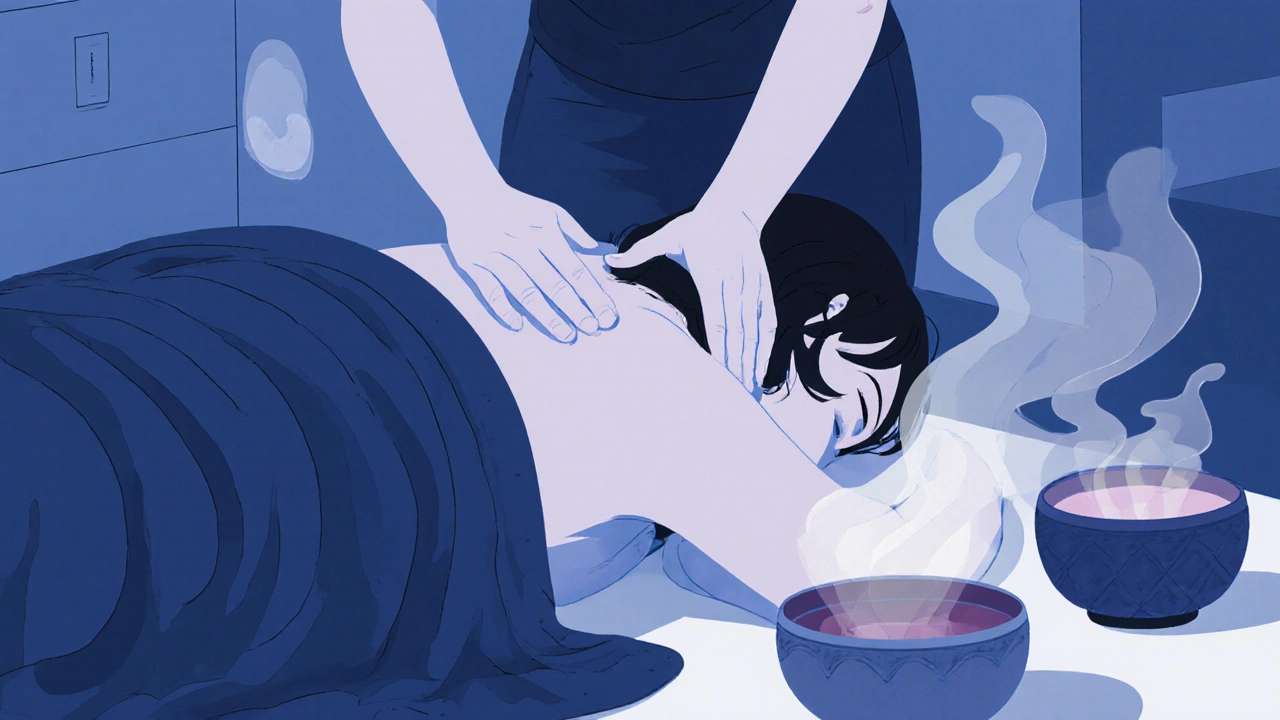
How to Pick the Right Massage for You
Not every massage is meant for everyone. Here’s a quick guide:
- For stress and anxiety - Go for trauma-informed or aromatherapy with lavender and frankincense. These activate the parasympathetic nervous system.
- For sore muscles from sitting or running - Deep tissue or Thai works best. Avoid hot stone-it’s too superficial.
- For chronic pain (back, neck, hips) - Look for therapists trained in myofascial release or trigger point therapy. Ask if they’ve worked with clients who have similar issues.
- For couples or a treat - Book a couples massage at a quiet, private room. Avoid places with shared spaces-distractions kill the experience.
Pro tip: Book your first session on a weekday morning. Weekends are packed, and therapists are rushed. You’ll get more attention, and the room will feel like your own sanctuary.
What to Expect After Your Massage
Good massage doesn’t end when you sit up. Here’s what happens in your body next:
- First 24 hours - You might feel slightly sore, especially if it was deep tissue. That’s normal. Drink water. Don’t reach for alcohol or caffeine-it dehydrates your muscles and slows recovery.
- Day 2-3 - This is when the magic kicks in. Your range of motion improves. Your shoulders drop. You sleep deeper. You notice you’re breathing slower.
- After 5-7 days - If you still feel tense, you didn’t get the right therapist. Don’t blame yourself. Try another place. London has options.
Some people feel emotional after a massage. Tears, laughter, sudden calm-it’s common. Your body holds memories. A skilled therapist doesn’t just work on muscles-they help release what’s been trapped.
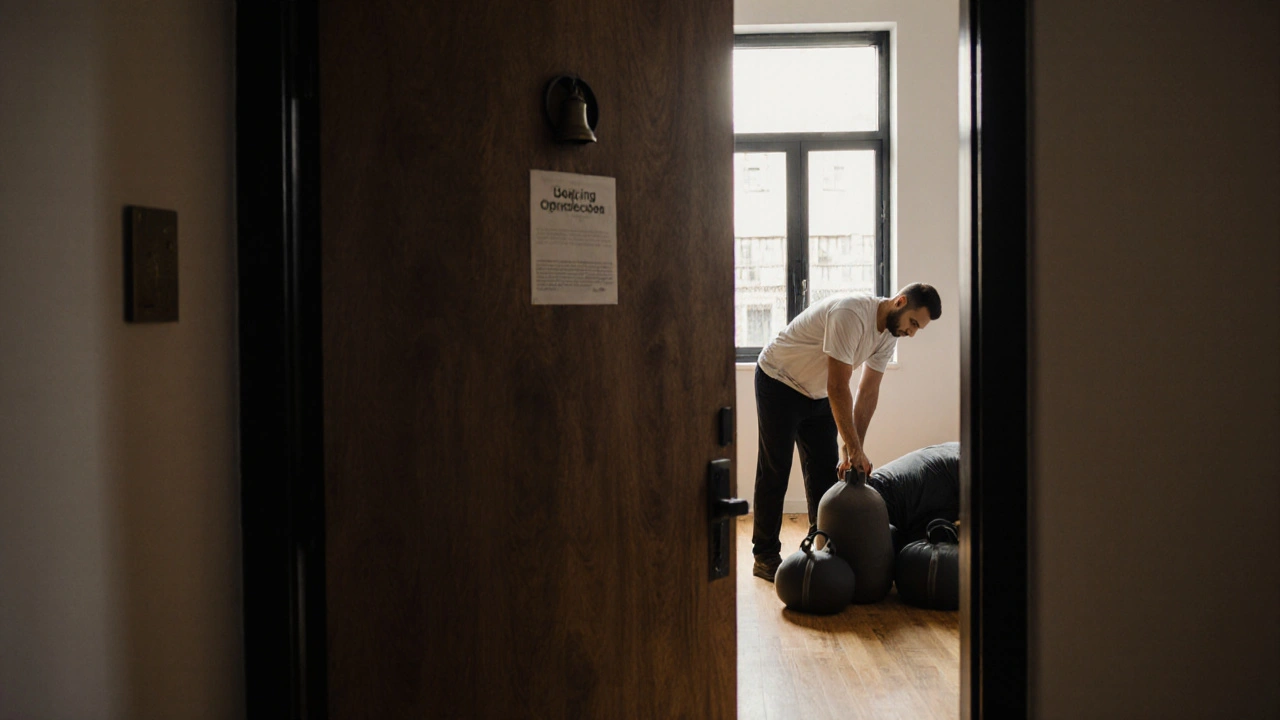
Is It Worth the Cost?
London massages range from £45 to £200. Is the expensive one worth it?
Yes-if the therapist has real training, not just a weekend certification. Look for therapists with qualifications from ITEC, VTCT, or City & Guilds. These are the gold standards. Avoid places that say “certified by our in-house program.”
Think of it this way: if you spent £120 on a massage that gave you three days of pain-free sleep, that’s £40 per night of rest. Compare that to a sleeping pill that costs £5 but doesn’t fix the root cause.
And if you go once a month? You’re investing in your long-term health. Less physio, fewer doctor visits, better focus at work. That’s not a luxury. That’s prevention.
Final Thought: It’s Not About the Location. It’s About the Connection.
London has hundreds of spas. But only a few have therapists who treat massage like a craft-not a commodity. The best ones don’t just know how to rub your back. They know how to listen with their hands.
So don’t just book the one with the nicest website. Book the one that feels right. Trust your body. If you walk out feeling lighter, calmer, and more like yourself-you’ve found your bliss.
What’s the best time of day to get a massage in London?
Morning or midweek afternoons are ideal. Therapists are less rushed, rooms are quieter, and you’re more likely to get personalized attention. Avoid Friday evenings and Sunday afternoons-they’re the busiest and most stressful times for spas.
Can I get a massage if I have a medical condition?
Yes, but only if you tell the therapist first. Conditions like high blood pressure, pregnancy, recent surgery, or nerve damage require special techniques. Reputable spas will ask you about your health history before you lie down. If they don’t, find another place.
How often should I get a massage in London?
Once a month is ideal for most people to manage stress and muscle tension. Athletes or those with chronic pain may benefit from twice a month. If you’re using massage for relaxation, once every six weeks is enough to maintain the benefits.
Do I need to tip my massage therapist in London?
Tipping isn’t expected in London spas-it’s not part of the culture. If you feel grateful, a heartfelt thank-you note or a review online means more than a tip. Some therapists are paid a fair wage; others work on commission. Either way, your word-of-mouth recommendation helps them more than cash.
What should I wear during a massage?
You’ll be covered with a towel at all times. Most people undress to their underwear, but you can wear shorts and a tank top if you’re more comfortable. The therapist will leave the room while you get settled. Your comfort matters more than what’s expected.
If you’ve tried massage before and walked out feeling the same, don’t give up. London has therapists who know how to heal, not just soothe. Find one. And let your body remember what it feels like to truly rest.

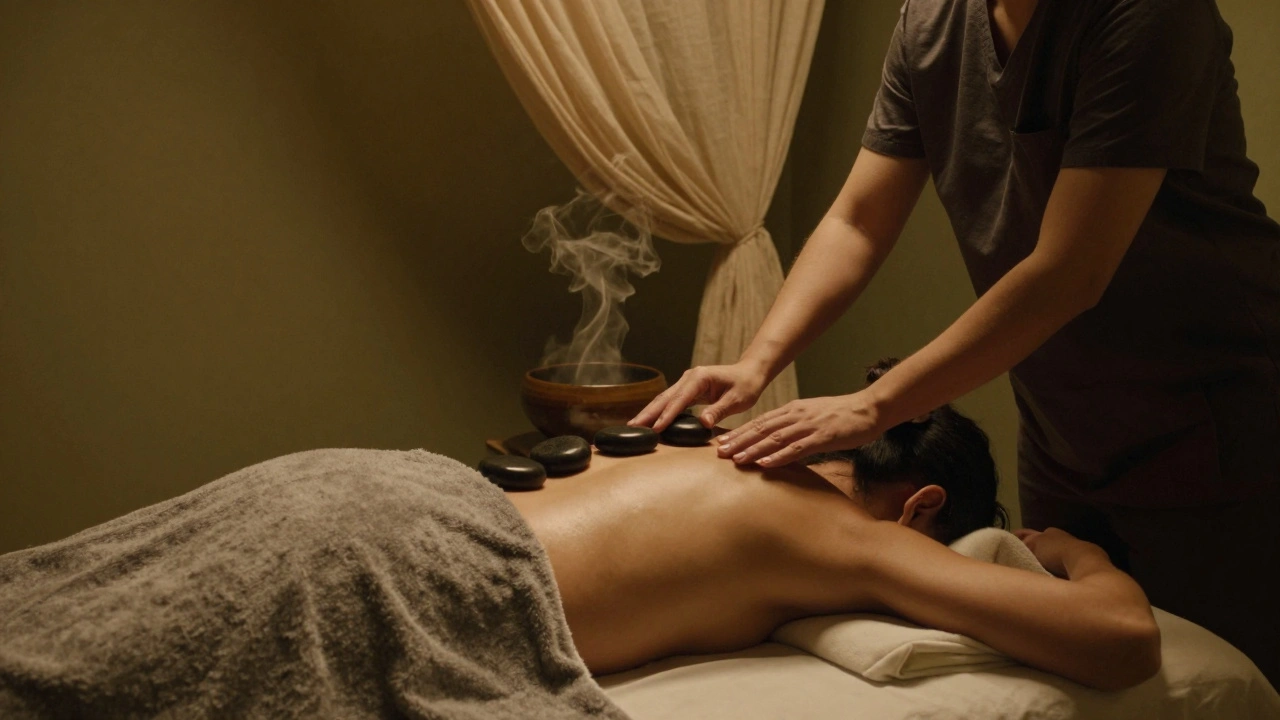
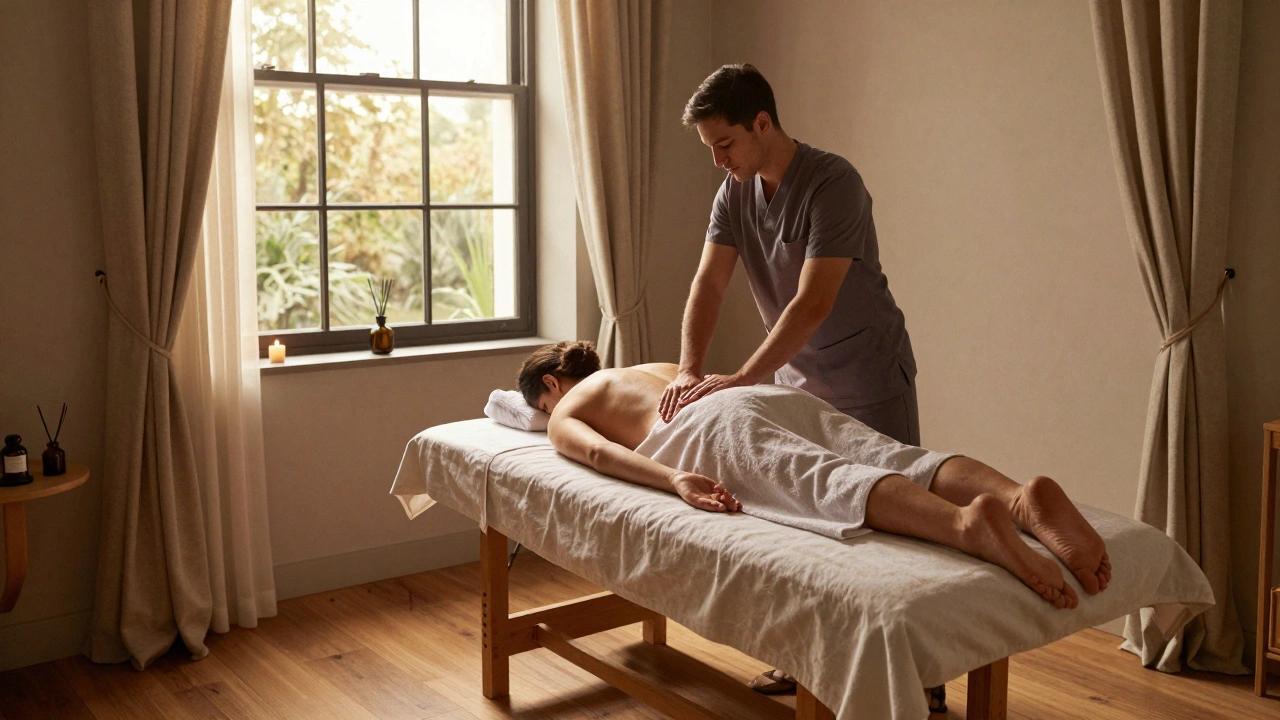
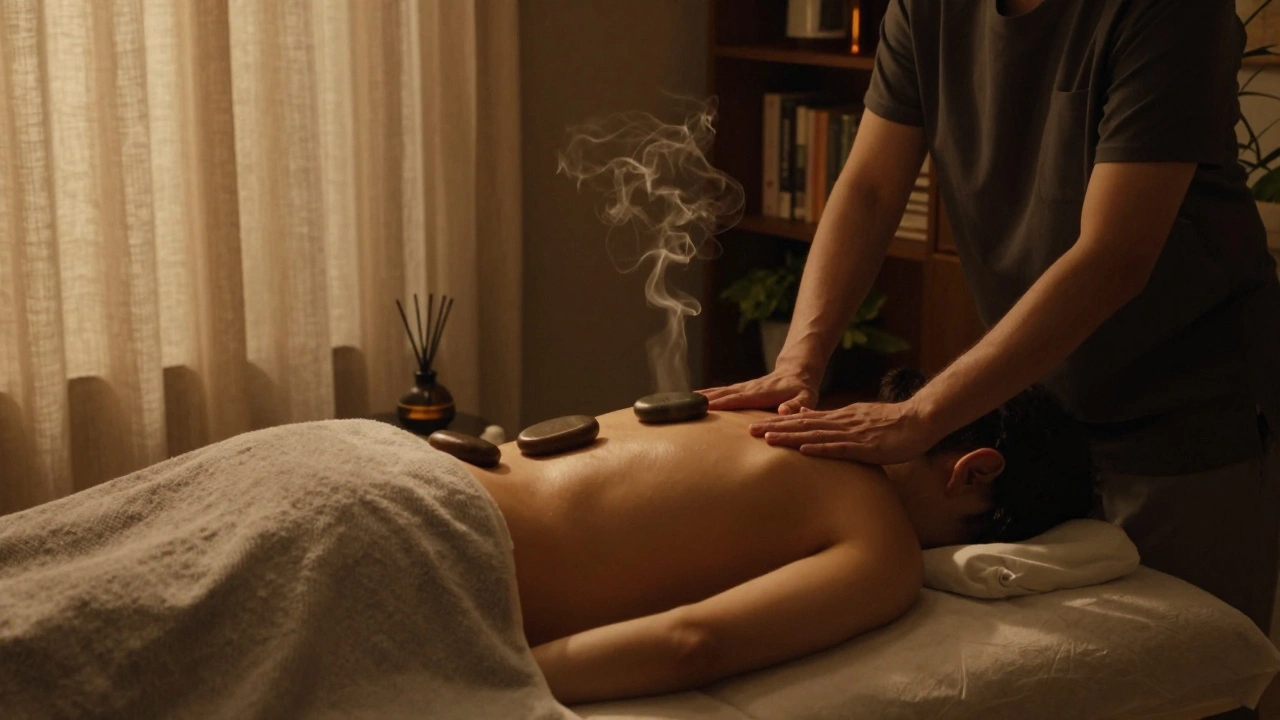
Marc Houge
November 4, 2025 AT 03:02Just got back from The Quiet Room last week. No website, no Instagram, just a bell and a guy who asked me three questions before I even lay down. I cried. Not because it hurt-because for the first time in years, I didn’t feel like I had to explain my body to someone. That’s the magic. Not the price. Not the candles. Just the hands that listen.
Brice Maiurro
November 4, 2025 AT 22:41bruh i went to this place in soho called 'zen zone' cause it had 5 star reviews and a neon sign. therapist was on her phone the whole time. asked me if i wanted 'extra tension release' for £30. i said no. she did the same 5 moves for 50 mins. i left feeling like a deflated balloon with a headache. london spas are a scam if you dont know where to look.
Jackie Brosio
November 5, 2025 AT 22:24I used to think massage was just a luxury… until I started having panic attacks. The Sanctuary changed everything. Not because it was expensive. Because the therapist didn’t say a word. Just held my hand after the session and said, ‘You’re safe here.’ I didn’t even realize I’d been holding my breath for years.
Hamza Shahid
November 6, 2025 AT 00:34Oh please. 'Trauma-informed massage'? That’s just spa jargon for ‘I didn’t go to real school so I made up a buzzword to charge more.’ My cousin’s cousin did a 2-week online course and now calls herself a 'fascial whisperer.' You think your hips hold trauma? Mine hold student loans and bad decisions. A deep tissue rub and a beer fixes both.
Emily Wetz
November 6, 2025 AT 17:31It’s not about the technique. It’s about the silence. The way the room holds you. The therapist doesn’t need to fix you. Just be there. That’s all. And if they talk too much? They’re scared you’ll leave before they make their quota. Trust the quiet ones. They’ve seen more than you know.
Jumoke Enato
November 8, 2025 AT 14:55London massage therapists are supposed to be ITEC certified but I checked the register and 40 percent of those listed in Mayfair are either expired or never existed. The London Spa Club? Their head therapist was suspended in 2022 for unlicensed practice. You think you’re getting premium care but you’re just funding a front. Read the CQC reports before you spend £150 on a lie
Jamie Williams
November 8, 2025 AT 22:55Have you ever considered that the entire wellness industry is a corporate psyop designed to distract the working class from systemic collapse? Massage is just the velvet glove on the iron fist of late-stage capitalism. They sell you ‘release’ so you don’t question why your body is in constant pain to begin with. The real solution? Stop working. Burn it all down. Then maybe your hips will relax.
Kate Cohen
November 9, 2025 AT 22:00OMG I went to Alma Spa and I cried so hard the therapist had to bring me a tissue and a cup of chamomile tea and I felt like I was hugging my 8 year old self again 🥹💖 I’ve never felt so safe in my life. Everyone needs this. Like right now. Even if you think you’re fine. You’re not. We’re all just pretending. And that rosemary oil? It’s basically magic. I’m booking again next week. #SelfCareIsntSelfish #MassageTherapyHeals
Diana Farrell
November 11, 2025 AT 21:47You don’t need to spend a fortune. Try the community center in Peckham. They have student therapists training under licensed pros. £25 for 60 mins. I went last month. Felt like I’d been unplugged from a wall socket. You don’t need a Mayfair address to feel human again. Just a willing hand and a quiet room.